News
A woman enquired of Herbert Hoover (later to be US president) whilst on a ship what he did for a living and he replied “An engineer”. She apparently responded: “But I thought you were a gentleman”. Since then, the practice of engineering has changed considerably over the past hundred years, and I want to explore a few trends and how you can grab advantage of them.
Dear Colleagues
A woman enquired of Herbert Hoover (later to be US president) whilst on a ship what he did for a living and he replied “An engineer”. She apparently responded: “But I thought you were a gentleman”. Since then, the practice of engineering has changed considerably over the past hundred years, and I want to explore a few trends and how you can grab advantage of them. There is still no doubt in mind, that there are some constants in engineering such as strong skills in maths and science (and the associated need to be meticulous and precise). And the ability to troubleshoot and to transform mere ideas into real useful objects.
Some of the current trends that are obvious are discussed in the next few paras. I do clearly see today, the need to be obsessively multiskilled and highly receptive to and embrace new ideas and approaches. There has been a merging of professions – mechanical/electrical/ IT and the emergence of new ones. In this ruthless world of change, some engineering professionals have been resistant to change and quickly find their skills redundant (e.g. one colleague of mine - a technician working in the industrial data communications area refused to move beyond RS-232 and RS-485 into the realms of Ethernet and reluctantly retired).
As Sujeet Chand from Rockwell remarked: there are many more constraints when designing; so one has to be quite adroit in dealing with these (and getting one’s head around them). This includes such issues as energy efficiency, cost, climate change, safety and ergonomics.
One has to be able to collaborate widely and communicate continuously and well. And often in a virtual way using email/ the web/ web and video conferencing with different cultures located all over the world. There is a merging of collaboration with people and the resources on the web. All information is available on the web today in a searchable format meaning very complex designs can be quickly put together.
Outsourcing of non-core functions has often seriously emasculated engineering companies with loss of great engineering talent. This has left many companies with the only remaining ability to repackage old technology which eventually runs out of steam in this highly competitive market.
A lot of the very satisfying hands-on experience is not with us any longer, with James Truchard of National Instruments remarking that the mathematics has isolated us from grounded reality in many cases. We have lost the intuition due to this high level of abstraction. Fortunately with the new approaches to simulation and representing data in realistic simulations, we can move back to the hands-on intuitive approach again.
So what do we do about this:
- Strengthen our communication skills in collaboration with other cultures and engineers from throughout the globe.
- Strive for retaining the hands-on intuitive approach to doing engineering using the new 3-d simulation approaches
- Embrace multiskilling and regard engineering as one vast interlocking field where your skills extend across the entire spectrum and your skills are not in silos.
- Be wary of outsourcing and losing core resources and functionality
- And I know I sound fixated but keep learning and absorbing
Thanks to Terry Cousins of TLC Software and Machine Design for giving me the incentive to write this.
And a brilliant quotation which I love today, from Christina Baldwin: “Change is the constant, the signal for rebirth, the egg of the phoenix”.
Yours in engineering learning
Steve
Mackay’s Musings – 24th May’16 #601
780, 293 readers – www.eit.edu.au/cms/news/blog-steve-mackay
A new report made available by MarketsandMarkets has estimated the amount of money the industrial robotics industry will make from now till 2022 is US$79.58 billion. That would mean a growth rate of 11.92 percent combined annual growth rate from this very second until we reach 2022. The report was titled Industrial Robotics Market by Time (Articulated, Cartesian, SCARA, Cylindrical, Parallel), Application (Automotive, Electric and Electronics, Metal and Machinery), Component (Controller, Sensors, Drive) and Geography- Analysis & Forecast 2022. So it is safe to say it covers the vast majority of industrial markets robots are currently applying to. No surprise then that the number of $79.58 billion is so high.
The report just cements the fact that industrial automation and the Industrial Internet of Things that will work in tandem with the industry is the next step forward. The report claims that the market is being dominated by the Asia-Pacific areas ; China, Japan, South Korea and India. The demand for robots is incredibly high. Also we have seen recently that Chinese companies are buying out European robotics companies to utilize the technology currently being developed. Kuka Robotics' purchase shows that the demand is high and billions will be forked out for the current technology.
The report actually names Kuka, amongst other companies that are currently performing well in the industrial automation industry:
- ABB Ltd. (Switzerland)
- FANUC Corp (Japan)
- Kawasaki Heavy Industries Ltd. (Japan)
- Yaskawa Electric Corp (Japan)
However, $79.58 billion is a very big number. It cannot seriously be true. But, then you remember, that there's even a robot that cuts marshmallows. Honestly, all we need is a taffy-pulling robot and then we've put Willy Wonka out of business. Check below for the kind of robotics that ABB supplies the food industry. If you notice how many different tasks robots can currently be doing in our world already, perhaps the estimates of how much money the industrial robotics industry might make by 2022, isn't that far off.
Source: Engineering.com
Wearable technology is slowly making its way into the world of today thanks to the engineers in the research and development centers all around the world. Engineers at the University of California San Diego are now announcing that they have the world's first, flexible, wearable device that can monitor "both biochemical and electric signals" that the human body emits. They're calling it the Chem-Phys patch and it records EKG (electrocardiogram) heart signals and other biochemicals the body emits when doing physical activity. The device can be worn in the center of the chest and connects wirelessly to a source that extracts the data (smartphone, smartwatch, laptop).
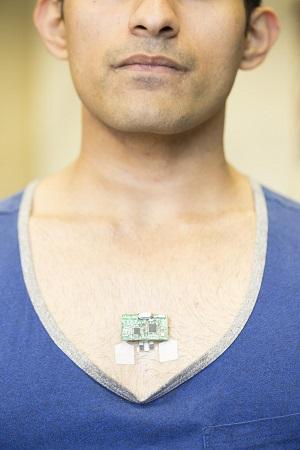
The study of wearable technology is growing at such a rate that UC San Diego has their very own Center for Wearable Sensors where their nanoengineers and electrical engineers do all the work. The engineers say the device they have built will have many uses from monitoring physical activity to measuring data on a patient who has heart disease.
"One of the overarching goals of our research is to build a wearable tricorder-like device that can measure simultaneously a whole suite of chemical, physical and electrophysiological signals continuously throughout the day," said Patrick Mercier, an electrical engineering professor at UC San Diego.
A tricorder being a fictional hand-held device used in Star Trek that would scan a person's body and do a data analysis, eventually spitting out what would be physically wrong with a character in the form of a medical diagnosis. If you didn't know these engineers were nerds before, you surely know now.
Dr. Kevin Patrick, a physician and director of the Centre for Wireless and Population Health Systems at UC San Diego has been watching the engineers at work and thinks the tricorder-like device could be super beneficial to the sports world. He said: "The ability to sense both EKG and lactate in a small wearable sensor could provide benefits in a variety of areas. There would certainly be interest in the sports medicine community about how this type of sensing could help optimize training regimens for elite athletes."
The next step for the engineers could be to try and take the device to the Qualcomm Tricorder X Prize competition that was set up for the sole purpose of actually trying to build a tricorder as seen on Star Trek. The competition will wrap up in 2017 and the prize money will be $10 million. However, it seems as if the competition has already found its finalists.
Source: Eureka Alert
Universities in the United States are going to great lengths to prove that their engineering courses are female-friendly. The University of Wyoming recently held an event called Women in STEM, that saw 500 young women from grades 7 to 12 interact with fields that in recent history have been overrun by men. The event is one of many events that have been held across the United States to attempt to further convince young women that a career in a STEM field would be beneficial to their futures.
"Women are still under-represented in the science and engineering fields, and we want to give young women information about career opportunities and college majors in these fields and expose them to all the opportunities out there in terms of science and engineering," said Shawna Mcbride, an associate director of the Wyoming NASA Space Grant Consortium, speaking to Wyoming Business Report.
Notably, professors of electrical and computer engineering held workshops for the girls, showing off robotics and Raspberry Pis, things that would hopefully pique their interest.
The University of California has also tried to bring young adult women into engineering by hosting a week-long summer camp called The UC Berkeley Girls in Engineering Week that explored the different kinds of engineering that exist in the world. The girls seemed to enjoy the biomedical engineering workshop, the robotics displays, civil engineering workshops and the software development workshops. All of the instructors at the event were women, which inspired confidence in the girls seeing as though they could see that some women do thrive in the engineering industry.
Shocking statistics
An Ohio State University study has investigated how much females who have obtained P.h.Ds earn one year after graduation. The results showed that women earn 31 percent less. The results were published in Science Daily under the title Young women in STEM fields earn up to one-third less than men.
Bruce Weinberg, co-author of the study and professor economics at Ohio State said: "There's a dramatic difference in how much early career men and women in the sciences are paid. We can't get a sense of some of the reasons behind the pay gap, but our study can't speak to whether or any of the gap is due to discrimination. Our results do suggest some lack of family-friendliness for women in these careers."
The data has confused the authors due to inconceivable reasons as to why women are earning less than men in STEM fields. The data was compiled by the U.S. Census Bureau with help from the American Institutes for Research. It is concrete evidence that women are earning less in STEM fields. The STEM career compensation data has been recently unavailable however 150 institutions will hopefully be publishing their data soon. Only 16 universities have provided data for researchers to comb over that have produced the above-mentioned results.
What is the next ultra-strong building material the world is going to use in its structures? You've been using it since you were a child, it's been under your nose the entire time. Sand. The stuff sand castles are made out of. However, whenever you've made a sand castle it's usually ended a crumbling mess even if you built it well. This is where geotechnical engineering comes in. The aim is to make regular sand/dirt a stronger material so that we could eventually sturdy structures on the inexpensive ground we stand on. We already use some of the technology in highway projects in our world today. But there could be a fruitful future in mechanically stabilized earth.

A YouTube channel called Practical Engineering has shown how this is possible. They foresee a future where instead of the molecular bonds that steel and concrete require (which produces fossil fuels in its creation), sand is could be an all natural alternative. But how do we strengthen something so 'fluid' as the sand that immediately falls away when we scoop a handful of it up from the beach? Practical Engineering points out that when a force is applied to soil, the sliding planes are infinite and therefore something cannot stand on it without making the soil's rigidness fail.
Reinforcing elements are the answer. Sand requires more reinforcing elements because it cannot stand up vertically with causing a slope. Concrete can stand at a vertical face due to the mechanical stabilizing that the engineers have secured within it or around it. So the YouTube channel explains that flat pieces of fabric are layered between the soil which creates a reinforcement and strengthens the sand. This in a real life example would obviously translate to a sturdier soil reinforcement method with sturdier materials. They show that MSE (mechanically stabilized earth) walls are used in highway projects and then covered up with patterned walls that are quite nice to look at but are always an example of soil that has been stabilized with reinforcements and are actually super-sturdy pieces of engineering. 
Steel reinforcements - that can be layered in between soil - are utilized in the civil engineering world today, but the future of a cost-effective fabric that could be layered between soil could be the future of reinforced soil. The current issue with using steel reinforcement is that corrosion can occur, however, the patterned panels can preserve some of the corrosion that would occur due to wind and water, however, most engineers point out that the panels are basically just for decoration. However, some galvanized steel reinforcement blankets can last up to seventy-five years according to industry insiders, and that can be layered in between soil to mechanically reinforce it.
Do give the video a watch, they balance a car on a cube of reinforced soil to show how sturdy it can actually be.
What software do you use to make incredible, engaging engineering designs? Are the products you're designing ready to connect to the Internet of Things? Autodesk Fusion 360 looks to be a mechanical engineer's dream software and they have now updated it to include something they call Fusion Lifecycle and Fusion Connect. Yes, Autodesk is embracing the Internet of Things, which was quite apparent since they bought out a company called SeeControl that specialized in cloud-hosting and IoT. Now, thanks to technologies from SeeControl, Autodesk now gives engineers the freedom to design whilst their program analyses and manages performance data for you.
"Both Autodesk Fusion Lifecycle and Fusion Connect are existing products, but they're now dramatically enhanced. Fusion Connect captures, analyzes, and manages performance data, so you can improve your design. It monitors products remotely. It can even push out new features over the internet. The fundamental mission for Fusion Connect is to identify failures before they occur," said Ron Locklin, Autodesk's director of business development for Fusion Lifecycle.
Thanks to their new Fusion Connect platform, engineers can create IoT infrastructures and see how the products would behave in those sorts of connected networks. This could be invaluable for industrial complexes that are moving towards the Internet of Things but need an example of how their machinery would work alongside it.
The software utilizes the Industrial Internet of Things and can produce the data the engineers need so that an industrial process can be refined to the point that it improves the product that is being made. It will also connect smartphones to the software so that the engineers and bigwigs of a company can keep an eye on production rates and data that pertains to how efficient a factory is working.
Autodesk's Fusion platform claims it can do more than just IIoT work, it can also deal with industrial additive manufacturing (3D printing) designs as well. They are certain their cloud-based, non-hardware solution will ensure that products get designed and manufactured much quicker.
Autodesk also wants to encourage engineers to design products that can connect to the Internet of Things and they have eight tips on how to achieve that goal:
- Identify IoT value: Determining what information customers will value in an innovation.
- Build product model: How the product creates value.
- Build product app: An app that monitors and interrogates built models and accesses the real time analytics. System data must be available. Point & click approach to making IoT analytics easy for anyone to read.
- Set up analytics: Real-time analytics (rules engines that make decisions in the present), predictive analytics (what a product may do in the future and how efficient it may be), descriptive analytics (makes sense of the past) and prescriptive analytics (based on a rule, how would the product react).
- Choose networking equipment: After choosing the sensors the industrial machines will work on, the network fabric is decided on. Operational Technology Network: Connects the sensors within the product. Then the Information Technology Network connects the OT network to the product-cloud so that the analytics can be presented to anyone who would like to see them.
- Connect network and product cloud with backhaul connection: WiFi/4G connections to ensure the sensors and products talk to each other and upload their data to the cloud.
- Security & privacy: Saving the system from external hackers or internal factors.
- Connect external systems: Standalone third party analytics measuring systems could be possibly be installed so that a company doesn't need to make sense of the analytics themselves, a third party can tell them what is happening with their machines and how to improve them.
Autodesk says that their Fusion products are perfect design tools to perfect all of the above-mentioned guidelines on how to create a product that is fit and ready for the Internet of Things. However, whether the cloud-based software is used or a different program is used, once a product has been designed, then manufactured, the only logical way forward in the world of today is to get it to connect to the Internet of Things.
The University of California, Davis and Santa Cruz branches, have accepted a twelve-year-old student who already has three degrees behind his name. He might be enrolling for biomedical engineering but doesn't know which university he wants to attend. What he does know is that he has aspirations to become a doctor and medical researcher when he finishes his studies at the ripe age of eighteen-years-old. His name is Tanishq Abraham
"I think I'll be 18 when I get my MD," Tanishq told reporters.
It was earlier this year that a girl of 15 aimed for a bright career in engineering in South Africa. Tapiwa Shendelane was accepted into the Univeristy of Witswatersrand for her Bachelor of Science in Industrial Engineering after achieving six distinctions in her final year at school.
"I used to get 100% in tests all the time without even putting in an effort. Even in my matric year, I didn't expect to do as well as I did, because I did not put in an effort," she said to News 24. "Age means nothing to me. I believe that education creates success and I want to encourage every young person to work hard despite their circumstances."
You might be thinking: Twelve years old, fifteen years old, that is far too young for a child to have left school and start studying. However, they get even younger than that. Before the end of last year, the Independent reported a story about a boy named Ayan Qureshi who became the youngest qualified Microsoft Computer Specialist. He was five years old when he completed the exam at Birmingham University. The qualification includes a deep understanding of Microsoft operating systems and how they can be turned into networks and the technology behind them.
These children are on their way to becoming superstar engineers because they have the mind for it and the resilience to continue working towards careers in the industry. Most children get disinterested in engineering at a young age in what the Dean of the Engineering Institute of Technology calls the engineering valley of death. To ensure the disinterest of STEM subjects don't happen, nonprofit groups in the U.S. have started up. A group called 100Kin10 was founded back in 2011 and, according to Fortune, has trained 28,000 STEM teachers that will attempt to inspire students to continue pursuing their STEM career dreams.
The stories of children who are persevering through engineering at a young age are so rare and isolated that we almost never hear of them but when we do it makes us wonder about how we could keep children interested in STEM subjects and get them to have fruitful engineering careers in the future. One benefit for children would be having a parent who is already an engineer who show them how it is done and bring them up in an engineering household. However, children should dictate their own destinies but as is apparent, some kids decide from a young age that engineering excites them and they go on to achieve some amazing things.
Civil engineering at its finest. Mayerthorpe in Canda experienced a series of arson attacks that saw a railway trestle bridge engulfed in flames. A crew went straight to work on the bridge after the fire of April 26th and was completed by May 15th. It took a record 20 days to rebuild the bridge after a full redesign of the bridge, then using steel span and concrete tubs they began work. It took 190,000 metric tons of steel and concrete to rebuild the bridge. The bridge is now longer than before.The bridge is now longer than before and harder to destroy due to the bridge that burned down completely made of wood. The bridge was ready for the next train to pass over it under a month after it had burned down. These civil engineers deserve a beer.
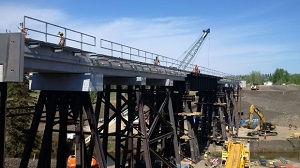 Charges were laid against a man named Lawson Michael Schalm, a 19-year-old Mayerthrope man. He was charged with 18 counts of arson. Funnily enough, Schalm was one of the firefighters who assisted with dousing the flames of the trestle bridge he had been suspected to have set alight.
Charges were laid against a man named Lawson Michael Schalm, a 19-year-old Mayerthrope man. He was charged with 18 counts of arson. Funnily enough, Schalm was one of the firefighters who assisted with dousing the flames of the trestle bridge he had been suspected to have set alight.
The swiftness of the engineers that rebuilt Mayerthorpe's trestle bridge were under pressure to do so due to the demand of the railway industry that runs on quick turnaround times and cannot afford to be delayed.
Watch the fly-by footage of the burning bridge from April 26 to the twenty days that followed wherein the bridge was rebuilt:
China has just about completed the world's largest radio telescope named the Five-hundred-meter Aperture Spherical Telescope (FAST). The telescope has been built by the National Astronomical Observatories of the Chinese Academy of Sciences (NOAC) with the assistance of Australian CSIRO engineering. Don't question the rationale behind building it, because you will end up listening to a conspiracy theory of how this dish might actually lead to a conversation with an alien race. However, it is a serious effort into finding radio signals within galaxies and investigating dark matter. Essentially, China is looking for radio signals buried far out into the stretches of the universe a radio signal has never reached before. The telescope cost $184 million and is positioned in China's Guizhou Province. There is one snag that is delaying the launch of the telescope. China confirmed to the Xinhau News Agency that it first needs to relocate up to 9,000 people before the telescope can be operational in the area. As a result, an electromagnetic wave environment will descend on the land without any chances of people getting in the way.

Dr. Larry Marshall, Chief Executive of CSIRO told PHYS: "Global collaboration is an integral part of CSIRO's Strategy 2020, as it maps out our desire to deliver science, technology, and innovation to new customers and markets while also delivering benefit back to Australia. This is a really exciting project and builds on 40 years of CSIRO collaboration with Chinese industry and research organizations."
The telescope - which stands at 30 soccer fields in length - will be able to outperform current telescopes by seeing several simultaneous beams as it measures for distant and hidden galaxies. Acting director of CSIRO's Astronomy and Space Science wing, Dr. Douglas Beck, said: "The powerful receiver we've created for FAST is the result of our long history developing cutting-edge astronomy technology to receive and amplify radio waves from space. Extending our technology and collaboration to China and working on what will become the world's largest radio telescope really cements our position as a global R&D leader in this space."
They expect to have FAST fully operational by September, 2016. To see the progress that had been made as of January, check the video below:
Electrical, mechanical and biomedical engineering come together once again. Researchers from MIT, the University of Sheffield and the Tokyo Institute of Technology have been working on a robot that you could soon be ingesting. You read that right. They're calling it an origami robot, in the sense that after swallowing it, it is supposed to unfold when it is inside the body. The robot will then be able to follow a specific order as programmed into it by an engineer.
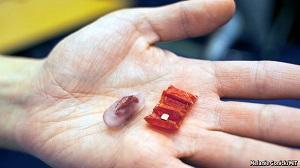 Daniela Rus, a director at MIT's Computer Science and Artificial Intelligence Laboratory, said: "The robot can remove foreign objects, it can patch wounds, or it can deliver medicine at designated locations."
Daniela Rus, a director at MIT's Computer Science and Artificial Intelligence Laboratory, said: "The robot can remove foreign objects, it can patch wounds, or it can deliver medicine at designated locations."
The researchers showed the robots off at the International Conference on Robotics and Automation in Stockholm this week. They worked with the case studies of children who had swallowed tiny button cells (used in watches, and electronic devices). These batteries that children ingest have harmful side effects and have to be removed through surgery, however, the researchers are confident that the origami robot could solve the need for surgery.
What about stomach acid? Rus explains: "The challenge with designing an ingestible robot is finding biocompatible materials that are easy to be controlled and amenable to the types of operations that are needed from the robot." The researchers used a pig-intestine casing for the robot so that a human body would not reject the robot upon ingesting it. The researchers built this second version that, according to Engadget, propels itself using the stomach's surface.
MIT and the University of Edinburgh were recently awarded some of NASA's Mars-bound Valkyrie robots to test out and improve. The University of Edinburgh has given the world an idea of how challenging the robots are to work with in a new video they have released. The robot is 1.8-metres tall and weighs 275 lbs, equipped with 200 sensors. NASA wants to essentially deliver the bots to Mars in one of their upcoming missions in conjunction with SpaceX. The hope is that the robots will be more efficient and dexterous than the rovers that are currently circumnavigating Mars.
Robert Platt, as an assistant professor at Northeastern University who is working on the project, said: "The rovers get their instructions uploaded at the beginning of the day. Those instructions amount to, 'Go over there,' or, 'Check out that rock.' It's a completely different ballgame when the job for the day is to assemble a couple of habitats." Which is something the Valkyrie robots might have the task of doing.
The University of Edinburgh has shown the initial progress with Valkyrie and it seems the mechanical engineering behind the robot is increasingly complex and slow.
Another university that got one of the four robots to play around with was the University of Massachusetts-Lowell who are working in tandem with Northeastern University. Taskin Padir, a professor at Northeastern University expressed his dismay with the robot's awkward walking and mechanical issues, saying for a price tag of $2.6 million, there's still some progress to be made.
Holly Yanco, a computer science professor at UMass-Lowell's said: "It needs to be able to communicate back to Earth, very clearly and concisely what's going on." However, if it cannot climb over rocks or show dexterity by then, the robots would be mostly useless on Mars. What does look positive is its dense visual mapping, that sees the robot virtually mapping out the terrain that might be necessary for it to navigate around.
Mechanical engineering and biomedical engineering are furthering their bosom-buddy status through a world first testing of HER technology. It means Haptically-Enabled Robots and Australia's Deakin University could be bringing them to the world with Telstra quite soon. The robots would be able to conduct ultrasound imaging diagnoses to remote locations where medical help is few and far between. The robots come out of the Deakin University's Institute for Intelligent System Research and Innovation, and will be connected through a 4G wireless network by the help of Telstra.

The 4G wireless network will also allow a doctor to be sitting 620+ miles away whilst they control the robot and use the technology on a patient that is in another part of the country. The institute's director, Professor Saeid Nahavandi said the partnership would result in a world-first application of the HER technology that had previously been a pipe dream for some companies to achieve. He said: "Our aim is to develop advanced haptic, or force feedback, and stereovision capability for remote ultrasound procedures. It will increase the availability of ultrasound for regional patients, which is incredibly important, but it will also minimise potential errors, saving time that might be spent having the patient rescanned or transported to a regional hub."
Telstra needs to ensure that the network will be operational twenty-four-seven if this kind of technology is to work on 4G networks. "We're certainly not looking to lock up this technology just for domestic use, we think it has global applicability and certainly we will work with some of our international partners to see how we can license and deploy this for the greater good of the world," said Vish Nandlall, Telstra's chief technology officer. "This can help in improving patient outcomes at the end of the day because we're basically allowing skilled operators to get access to those remote patients without having to travel to those remote locations."
The haptic feedback on the doctor's side will allow them to physically feel what the robot is doing under their command from hundreds of miles away.
Source: ZDNet
Getting your honours degree in chemical engineering should lead to employment regardless of the country you got in, right? In South Africa, chemical engineers are taking to the streets to physically beg for jobs in the industry. Social media has sparked a conversation about graduates not being able to get jobs after two photos purportedly showing graduates begging for jobs found their way onto Facebook and Twitter this week.
 Both pictures show citizens of the country that claim to have B-tech degrees in chemical engineering. In the first photo that emerged a woman wrote, "I have B-Tech Chemical Engineering. Please help!!! I NEED A JOB. CV in my possession," on a piece of cardboard and stood at traffic lights which is an action synonymous with beggars in the country. Her name is Anthea Malwandle and stood at an intersection in Rosebank, Johannesburg. According to EWN, she completed her degree at the Vaal University of Technology in 2015 and has been looking for a job ever since. The silver lining is that after the picture was shared on social media, she finally got an interview at Sasol.
Both pictures show citizens of the country that claim to have B-tech degrees in chemical engineering. In the first photo that emerged a woman wrote, "I have B-Tech Chemical Engineering. Please help!!! I NEED A JOB. CV in my possession," on a piece of cardboard and stood at traffic lights which is an action synonymous with beggars in the country. Her name is Anthea Malwandle and stood at an intersection in Rosebank, Johannesburg. According to EWN, she completed her degree at the Vaal University of Technology in 2015 and has been looking for a job ever since. The silver lining is that after the picture was shared on social media, she finally got an interview at Sasol.
Then another picture emerged onto social media of a man named Sello Mokate, who graduated from the University of the Free State with his B-tech in chemical engineering as well. He too took to the streets with a cardboard stating his qualifications and asking for a job.
Mokate spoke to Times Live, saying: "It pains me that I rely on my older brother and parents for provisions but I have a B-tech. I thought I would be employed by now but I have sent countless emails and I went to a number of interviews with no success."
Where the divide is occurring is due to the fact that a BSc (Bachelor of Science) or B.Eng (Bachelor in Engineering) degree is research and development oriented and seemingly highly regarded, whilst a Btech degree is implementation oriented. Nonetheless, both 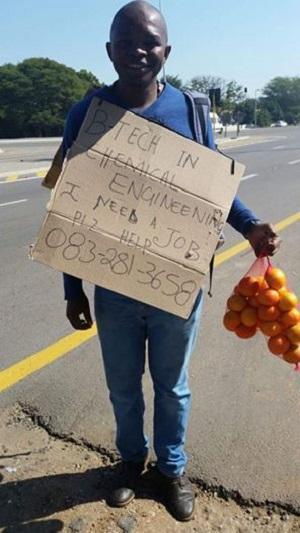 should equate to a job in the industry, however, BTech degrees seem to be ignored by employers. This could be due to the fact that BSc and B. Eng degrees sometimes come from highly regarded universities compared to some BTech students who get their degrees - starting with a national diploma - through a technikon or technical college.
should equate to a job in the industry, however, BTech degrees seem to be ignored by employers. This could be due to the fact that BSc and B. Eng degrees sometimes come from highly regarded universities compared to some BTech students who get their degrees - starting with a national diploma - through a technikon or technical college.
The country has tried to level the playing field and make the qualifications made at technikons equal to those of universities but as is apparent due to the social media postings, that has not been the case. As a result, you get a gap between engineering graduates and employers that seem to exercise preference. However, the situation is changing in a country which is desperately looking for engineers in certain fields. Qualifications from all sorts of institutions are slowly but surely becoming more relevant to employers who require engineers in the industry.
It's an aerospace and aircraft maintenance engineer's worst nightmare. An Airbus 320 belonging to EgyptAir has gone down in the Mediterranean Sea. At around 2:30 a.m. Cairo time (UCT +2), the plane disappeared from radar tracking and by 4:26 a.m. the rescue operations received a distress signal from the plane's emergency devices. MS804 was being tracked by Greek air traffic controllers who said they had spoken to the pilot and ensured that everything was in order and then an hour later the plane made a sharp left turn and then a 360-degree spin to the right. The plane had taken off from France at around 11 p.m. and headed for Egypt.
There is a list of things that could have gone wrong but what engineers are hoping is not true, is that the plane went down for mechanical reasons or for maintenance reasons.
Rescue operations started off the Greek island of Karpathos in Egyptian airspace.
Airbus confirmed the following facts on their Facebook page:
- The aircraft was delivered to Egyptair in November 2003
-Accumulated 48,000 flight hours
-Powered by IAE engines
 Egyptian prime minister, Sherif Ismail, a former engineer, said it was too early to say whether or not the crash was linked to terrorism or if it was a mechanical failure that took the plane down.
Egyptian prime minister, Sherif Ismail, a former engineer, said it was too early to say whether or not the crash was linked to terrorism or if it was a mechanical failure that took the plane down.
Associated Press reported that Russia's domestic security chief says structural failure was unlikely. Major General Robert Latiff, who is an expert on aerospace systems and emerging weapons technologies at the University of Notre Dame said the chance of structural failure was: "vanishingly improbable."
Later on in the day, Egypt's aviation minister spoke to media and said that the possibility of a terror attack as a cause for the Egyptair crash was "stronger" than technical failure.
Greek sources had confirmed that they saw "large floating objects" in the ocean and were going to investigate further.
Bloomberg reported at 6:22 p.m. UCT+2 that they had also joined the search for MS804, a report that was preceded by a Reuters report that airplane lifejackets had been found by search teams that were investigating in the area.
CNN was the first news agency to lead with headlines that mentioned any form of bombs possibly taking the plane down. The @cnnbrk (CNN Breaking News) Twitter page wrote: "2 U.S. officials: Initial government theory is that EgyptAir Flight 804 was taken down by a bomb"
The plane had 66 people on board who have been presumed dead, according to Egyptian aviation authorities.
More news on the engineering aspects of the crash will follow as that information becomes available.
Google's annual I/O conference kicked off yesterday. This conference is used as a platform for the engineers of the company to announce new products, show off the engineering behind these new products and give the industry a window into what is coming up in the company's future. The first day kicked off with a few updates to some of the preexisting technologies from the company but also brought a host of new consumer products that the world can be looking forward to. Some of what will be shown at the conference will display exactly how the Internet of Things will soon be integrated into our daily lives and shows just what engineering can achieve. Here are some of the highlights:

Google Home: A voice-activated home assistant device that will bring Google Assistant into your homes. Essentially, you would be able to surf the internet and get information by just talking to the device. A competitor to Amazon's Alexa, the device will also assist in playing music and automating some home tasks. They are being referred to as 'smart-speakers' for the home.
Allo & Duo: A Whatsapp competitor for mobile that has a host of new, innovative ways of text chatting, including a chat service with Google Assistant that seems to border on Siri-like behaviour. Duo is a Facetime/Skype competitor that will allow face to face video conversation over a network, that allegedly will even work when a network is slow.
Android N: The update to the operating system came with a host of new announcements that included the announcement of something called the JIT Compiler which would lead to app installations at a speed that is 75% faster than it currently is on Android.
To see further development in virtual reality and wearables, check out the full I/O keynote:
Engineers at the University of South Wales have just set a new world efficiency record for solar cells. It's allegedly all about the solar cell configuration that allows sunlight-to-electricity conversion efficiency to be pushed up to 34.5%. Dr. Mark Keevers and Professor Martin Green work inside the UNSW Australian Centre for Advanced Photovoltaics and have configured the solar cells in such a way that when sunlight hits it, it splits sunrays into four bands that manage to extract more electricity from them.
The United States National Renewable Energy Laboratory confirmed that the system is 44% more efficient than the last record.
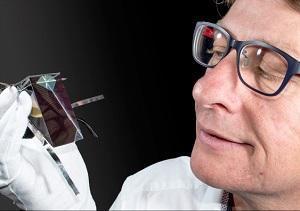
"This encouraging result shows that there are still advances to come in photovoltaics research to make solar cells even more efficient. Extracting more energy from every beam of sunlight is critical to reducing the cost of electricity generated by solar cells as it lowers the investment needed, and delivering payback faster," said Keevers.
UNSW says that the system devised by Keevers and Green using no concentrators and uses pure sunlight, whereas the last record was set by concentrator photovoltaics that utilizes mirrors that concentrate the light.
"What's remarkable is that this level of efficiency has not been expected for many years. A recent study by Germany's Agora Energiewende think-tank set an aggressive target of 35% efficiency by 2050 for a module that uses unconcentrated sunglight, such as the standard ones on family homes," said Green.
The good news is that solar cell efficiency is moving faster than expected, however, Green cautions that photovoltaic research must continue in Australia so that the country can also benefit from the engineering marvels they create. Australia has been progressing past many countries in being the first to subsidize photovoltaic cells for home use in some of its suburbs. The Clean Energy Council has also been very advanced in its setting of guidelines for installers in Australia. Now, with added efficiency, renewable energy is progressing quicker than previously thought. Additionally, the Australian Renewable Energy Agency has been funding solar concentration methods of photovoltaic cells. Recent reports on funding have indicated $1.4 million has already been funded.
Source: UNSW Australia News Room
China wants to be in charge of building service robots if the latest bid for a robotics company is any indication. A Chinese group named Midea Group has just put in their bid for Germany's Kuka Robotics. Their offer to the company is around $5 billion, which should show the seriousness of the market of service robotics. Kuka's current focus is how robotics will factor into the Internet of Things and assist the expansion of Industrie 4.0.
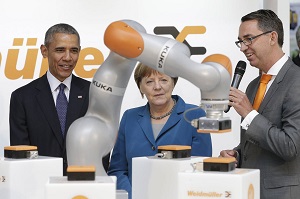
An automated welding robot is what one of their recent videos has shown off, a robot they also displayed at the Hannover Fair 2016. China, already synonymous for their robotic pioneering, will cement themselves as the number one importer of robotics if their deal for Kuka goes through. The International Federation of Robotics has reported that China currently utilizes 36 robots to every 10,000 humans. They lag behind the United States, who has 164 robots per 10,000 humans, who then lag behind South Korea who have 478 robots per 10,000 humans. The group also report that industrial robot sales have jumped up by 8% in 2015, with the greatest demand being in the automotive industry.
Midea Group says that they are not interested in a full takeover, which might bode well for some engineers working in the background at Kuka AG. It looks like their expertise is being chased here, but their $3 billion a year business might also be an attractive draw card. Nonetheless, experts are saying that Midea's purchase of Kuka could put them in the driver's seat of industrial automation in the world.
The Wall Street Journal has released the figures, showing how many Chinese companies have exacted takeovers of international companies. The results are staggering:
| Date announced | Target | Country | Industry | Acquirer | Deal value excluding debt, in billions |
| Feb 3 | Syngenta | Switzerland | Agribusiness | ChemChina | $44.1 billion |
| Feb 17 | Ingram Micro | United States | Technology | Tianjin Tianhai Investment Development | $6.1 billion |
| Jan 15 | General Electric | United States | Consumer Products | Qingdao Haier | $5.4 billion |
| May 18 | Kuka | Germany | Robotics | Midea Group | $5 billion + |
| Jan 12 | Legendary Entertainment | United States | Leisure and recreation | Dalian Wanda Group | $3.5 billion |
The biggest Chinese takeover of a company this year is ChemChina's mammoth $44.1 billion takeover of Syngenta in agribusiness, however, the biggest robotics takeover is Kuka's purchase by Midea Group. It should be interesting to see what kind of industrial robotic technologies come out of the deal but some analysts believe that Midea Group might want to venture into the home-robot industry for consumers to purchase. Time will tell.
Wearable technology is the current trend that has led to a plethora of engineers that are investing their time into creating incredible innovations. Building batteries for devices that can be worn on a body is a challenge due to the need for a battery that powers wearables without being clunky and getting in the way. Smart watches are getting it right to some degree but what if we want truly skin-tight wearables? Researchers have looked into the flexibility of batteries and have come up with something that could revolutionize the field of wearable technology.
At the University of Illinois, in the Department of Materials Science and Engineering, researchers have been working on flexible power systems. They have published their findings in the Proceedings of the National Academy of Sciences under the title Soft, thin skin-mounted power management systems and their use in wireless thermography.
In the abstract of their report, the researchers say the current options for wearables are "incompatible with thin geometries" and aim to change that with their new flexible alternatives. They have created millimeter-scale solid-state batteries, along with solar cells into "electrically interconnected arrays".
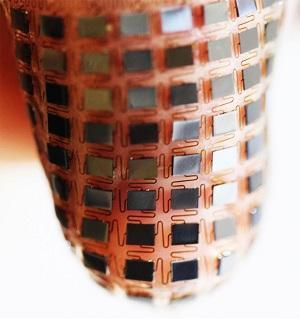
Explaining the electrically interconnected arrays, the engineers in their statement to the press, said: "The components are electronically connected via flexible copper-polymer interconnects, mounted on a highly elastic silicone core, and enclosed within a silicone shell. The resulting system could stretch up to 30% without detectable loss in solar power generation."
At the helm of the project is Professor John Rogers, at the Department of Materials Science and Engineering at the University of Illinois. He said: "If you think about conventional electrical devices they are all rigid as a consequence of the fact they are all formed on wafers of silicon. The question is how do you get from that to something that looks like the skin that matches the shape of the physical body."
The researchers then came up with the interconnected arrays that are connected through what they called 'spring-like wiring'. The result is something that can be worn and is stretchy enough to fit over a surface and then tightens up like a piece of clothing.
The research will be invaluable to the wearables industry as technology further integrates with humans and their bodies.
Germany. May 8th, 2016. Renewable energy in the country was utilized more than it had ever been utilized in the past. The country almost operated completely on renewable energy and left fossil fuels wondering what had happened. According to Bloomberg, at 2 p.m. on Sunday renewable energy sources supplied 45.5 gigawatts of the 45.8 gigawatts that were being demanded.
"Events like this highlight that eventually we may need to start curtailing because of market-wide oversupply. In the long-run, that may provide a case to build technologies that can manage this oversupply -- for example more interconnectors or energy storage," said Monne Depreaetere, an analyst at Bloomberg.
 The contributing factor, that cannot be reproduced at the drop of a hat, unfortunately, was weather conditions. There was a lot of wind on Sunday and that send wind turbines a-spinning. Germany is, however, currently getting a third of its energy from renewable energy sources. Additionally, solar, hydro and biomass plants factored into the amount of renewable energy that was supplying the country with energy for a few hours. At 2 p.m. the cost of energy was in the negative numbers in Germany, which means Germans were making money by using electricity.
The contributing factor, that cannot be reproduced at the drop of a hat, unfortunately, was weather conditions. There was a lot of wind on Sunday and that send wind turbines a-spinning. Germany is, however, currently getting a third of its energy from renewable energy sources. Additionally, solar, hydro and biomass plants factored into the amount of renewable energy that was supplying the country with energy for a few hours. At 2 p.m. the cost of energy was in the negative numbers in Germany, which means Germans were making money by using electricity.
Germany is focusing on 100% renewable energy by 2050, pushing forward and hoping to achieve most of the goals by 2030, which some critics have their doubts about.
And then out of nowhere, Portugal joined the party as well. They ran on competely renewable energy for four consecutive days. They ran from Saturday, 7 May to Wednesday, 11 May. Portugal has put a lot of funding behind solar energy to ensure that these sorts of feats of engineering are possible.
The World Health Organisation has said that 360 million people in the world are suffering with some sort of hearing loss. The most affected areas are South Asia, Asia Pacific and parts of Africa. Medical experts say that hearing loss is avoidable if diagnosed early on through primary prevention. However, the areas aforementioned are third-world areas and don't always have access to primary prevention processes in avoiding hearing loss.
Thankfully, engineering students are coming to the rescue and proposing a cheaper alternative to octoscopes that would involve plugging an item into a smartphone then taking photos of inside the ear. Students at Texas A&M University in the Engineering World Health department designed a model LED otoscope that will hopefully recieve funding so that anyone can keep a tab on the health of their ears.
This is not a foreign idea, there is a product called the Cellscope Oto that serves a similar purpose. With more and more engineers working on this technology, we could see the tool distributed globally for the health of ears everywhere.
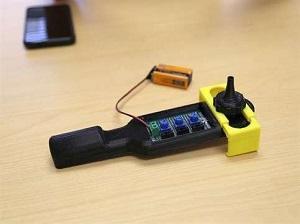
Tessa Bronez, a biomedical engineering graduate, said: "We have a lot of electrical engineers on the team, and they were really excited about doing something with optics."
The engineers decided to use a cell phone to make the otoscope cheaper due to the camera on the phone being instrumental in the process. "A lot of people are surprised to hear that many people in developing countries have smartphones, particularly in the more urban areas where hospitals are," Bonez said.
The team of engineers used a 3D printer, a normal otoscope lens and a motherboard. Then the smartphone can be attached to the device and be ready to monitor ear health. The researchers say the cost is $6.42. This is far cheaper than the estimated price of $299 for the otoscope by Cellscope, that will sell an iPhone case with the attachment on it. The low price point makes the students at Texas A&M University's otoscope design the most economical one that would apply directly to impoverished communities.
Source: Medical Xpress
Suzuki Motor Corp and its engineers have decided to come out with the truth due to a scandal that has been spreading through the automotive engineering world. The car maker divulged details that led to certain discrepancies in fuel efficiency reporting, indicating that the company had not abided to Japanese guidelines, and rather worked around them.
- All 16 vehicles currently available used data that did not accurately report emissions through the correct processes leading to improper testing. The improper testing affects 2.1 million cars. Instead of using the proper coasting test of the entire car, individual parts of the car were tested and factored into the final reports.
- They used the air-tunnel on single parts of the car and reported it as if it was the full car that had gone through the air tunnel tests
- The issues they are admitting to are subject ONLY to cars manufactured in Japan
 "The company apologizes for the fact that we did not follow the rules set by the country.," said Chief Executive of Suzuki, Osamu Suzuki.
"The company apologizes for the fact that we did not follow the rules set by the country.," said Chief Executive of Suzuki, Osamu Suzuki.
At Mitsubishi, the President of the company, Tetsuro Aikawa, has taken responsibility for their scandal and stepped down from his position.
However, now that Suzuki is testing the vehicles in accordance with Japanese guidelines, the company says all of their efficiency is in order.
"Any wrongdoing, such as manipulation of fuel efficiency data, were not found," Suzuki said to the media. During the briefing, Suzuki's shares fell by 9%.
It seems that Suzuki will emerge better off on the back of this scandal than companies such as Volkswagen and Mitsubishi. However, there is still time for more carmakers to come out of the woodwork and admit to fuel efficiency data manipulation.
Source: Reuters
Regenerative braking is the winner in the energy storage world, the competition is over, lithium-ion has been destroyed - is a statement you're not going to hear anytime soon. Nonetheless, it is a new energy storage alternative that could assist utilities when they need more energy to continually power the grid. Regenerative braking is a method of taking kinetic energy from moving parts and then storing that energy and reusing it. Electric vehicles have been using the method and trains have as well. As a train applies its brakes, a battery captures the kinetic energy.

Now, a company named ARES (Advanced Rail Energy Storage) is taking this technology more seriously and championing a new project in California. The company says their grid-scale energy management system is capable of providing utility balance when it is needed.
The way it works is through the use of 300-tonne train-like vehicles on a train track that will be self-driving. When a power utility is in need of power, the vehicles - who would have made their way uphill when the utility had an excess of power - will travel downhill. Their motors then become energy generators and generate electricity in the act of travelling downhill and then braking. The cabs have rocks in them so that they are weighted down and faster when coming downhill.
The engineers say the system life on these vehicles is 40 years or more and can produce 12.5 megawatt-hours of energy. ARES confirms that by 2019 they will be operating over 106 acres of land in Pahrump, Nevada. The project would end up costing $50 million +. However, whether this becomes the most sustainable way to ensure everyone in the world can look forward to cheaper, cleaner energy remains to be seen. For now, funding is even going in to regenerative braking to see if we can solve the energy trilemma.
ARES Chief Executive, Jean Kelly, said: "ARES Nevada will be a world-class facility and a point of pride for Nevada. The power production is clean and renewable - operating of the project requires no water or fossil fuel and creates no hazardous waste or emissions."
The National Assessment of Educational Progress (NAEP) has released its very first report card that measures technology and engineering literacy in schools in the United States. Published in the report named The Nation's Report Card: Technology and Engineering Literacy, the researchers observed how literate teenagers in the eight grade were by supplying "scenario-based tasks" on computers to measure their understanding of the subjects.
The results were:
- 45 percent of girls were above the proficiency level
- 42 percent of boys were above the proficiency level
- 43 percent of students were above the proficiency level
The results show that female students are in prime positions to further pursue studies that could lead to fruitful engineering careers due to the proficiency level being slightly higher than boys. The report observed 21,500 students from 800 public and private schools since 2014.
 "This assessment requires students to examine evidence, ask and answer challenging questions and choose the right tools for the problem at hand. This is the exact kind of thinking that the modern world demands at home and in the workplace, no matter the career path," said Chair of the National Assessment Governing Board, Terry Mazany.
"This assessment requires students to examine evidence, ask and answer challenging questions and choose the right tools for the problem at hand. This is the exact kind of thinking that the modern world demands at home and in the workplace, no matter the career path," said Chair of the National Assessment Governing Board, Terry Mazany.
63 percent of students said that they gained their engineering and technology literacy from family members, whereas 19 percent of students said to have taught themselves their proficiency.
"The scores clearly show that when students have opportunities to engage with technology and engineering, they become fluent in skills that prepare them for living and working in the modern world. But access to these opportunities from place to place is patchy. That's a call for communities to create opportunities where needed from schools to science centers to after-school programming," said Dr. Tonya Matthews, President, and CEO of the Michigan Science Center.
Shell has had a busy week which started on Thursday last week. First of all, the company went to work to try and plug a fault in a flowline that sent 2,000 barrels (approximately 90,000 gallons) of oil leaking into the Gulf of Mexico. The oil slick the leak has caused is reminiscent of the Deepwater Horizon Spill of 2010
 The Associated Press put the figures together and concluded that there have been 147 spills and 500,000 gallons spilled into the Gulf of Mexico since 2012. Shell claim to have wrapped up the cleaning effort, according to a statement. Shell said, "The joint response mobilized more than 150 people, five on-water recovery vessels for skimming, and aerial assets to respond to the sheen...There have been no reported impacts to the coastline or the fisheries."
The Associated Press put the figures together and concluded that there have been 147 spills and 500,000 gallons spilled into the Gulf of Mexico since 2012. Shell claim to have wrapped up the cleaning effort, according to a statement. Shell said, "The joint response mobilized more than 150 people, five on-water recovery vessels for skimming, and aerial assets to respond to the sheen...There have been no reported impacts to the coastline or the fisheries."
This once again catches the attention of opinion makers around the world and emphasizes the need for a moving away from fossil fuels due to the environmental threat substances such as oil are.
Vicky Wyatt, a Greenpeace campaigner, spoke to the Guardian, saying: "The last thing the Gulf of Mexico needs is another oil spill. The oil and gas industry's business-as-usual mentality devastates communities, the environment, and our climate. Make no mistake, the more fossil fuel infrastructure we have, the more spills and leaks we'll see. It's past time to keep it in the ground for good."
To appease some of their critics, Shell has launched a new division named New Energies that will focus on renewable energy. The new division will see Shell using some energy applications they have been unfamiliar with in the past, such as wind power. The company has not formally confirmed that they have launched the division, however, insiders are saying it has $1.7 billion funding and will work alongside the Integrated Gas Division within the company.
The move comes after Total opened their very own renewable energies division within their company in an attempt to show the world that the calls for companies to move away from fossil fuels are being heard.
Additive manufacturing is one of the modern marvels of the engineering world and it could become even more useful thanks to laser technology. A 3D printer built at Harvard University's Wyss Insitute and Harvard SEAS can create metallic objects in midair. The printer operates through what is called 'direct ink writing' that releases metallic inks, which is instantly frozen in place by a laser. The nanoparticle inks are squirted out of a nozzle in the printer's manufacturing and the laser solidifies it into predetermined structures.
"This sophisticated use of laser technology to enhance 3D printing capabilities not only inspires new kinds of products, it moves the frontier of solid free-form fabrication into an exciting new realm, demonstrating once again that previously accepted design limitations can be overcome by innovation," Wyss Insitute Director Donald Ingber, told Engadget.
According to the researchers' video, the wires that are printed through the solidifying of the nanoparticle ink are thinner than the width of a hair and are complex metallic structures the minute it makes contact with the laser. The researchers think this breakthrough in additive manufacturing could create new opportunities in electronic devices, sensors and more.
However, it wasn't all smooth sailing in crafting such a 3D printer:
Mark Skylar-Scott, one of the head researchers on the project said: "If the laser gets too close to the nozzle during printing, heat is conducted upstream, which clogs the nozzle with solidified ink. To address, this we devised a heat transfer model to account for temperature distribution along a given silver-wire pattern, allowing us to modulate the printing speed and distance between the nozzle and laser to elegantly control the laser annealing process 'on the fly'".
The researchers published their findings in the Proceedings of the National Academy of Sciences of the United States of America under the title Laser-assisted direct ink writing of planar and 3D metal architectures.
Think about where you store your information and the processes behind the storing of that information. We have DRAM to hard disk drives and flash memory as well. IBM has made a breakthrough in phase-change memory (PCM) that might replace flash storage and RAM. IBM Research engineers have released their findings in a journal video named Reliable Triple-Level-Cell-Phase-Change Memory Demonstrated for the First Time.
Dr. Haris Pozidis, a non-volatile memory scientist for IBM Research explains how the technology works:
The storing of a '0' or a '1', as known as 'bits', on PCM storage the following methods are followed:
- Apply a heated current to glass materials at 600 degrees centigrade, the material melts and then when it is cooled rapidly, then the material becomes solid, but is in an amorphous state.
- Then the amorphous state material is heated at 200 degrees centigrade and leads to crystallisation, which leads to a polycrystalline phase.
- Blu-ray DVDs are created this way
Recently, only 1 bit was stored, per cell, but the scientists at IBM have made a breakthrough whilst testing the technology out and are successfully storing 3-bits per cell.
"Reaching 3 bits per cell is a significant milestone because at this density the cost of PCM will be significantly less than DRAM and closer to flash," said Pozidis.
Pozidis points out that this process has been used in optical disk technology before and has been practised for 15 years but now they are able to superimpose the technology into PCM data storage.
The hope is that the creation of this PCM data storage could be created at low cost that works with the characteristics of DRAM but at higher densities. Therefore, as PHYS points out, a mobile phone's operating system could be stored on PCM storage, leading to a phone booting in a few seconds.
Use of PCM storage:
- Storing databases in memory
- Memory processing: Online banking, analytics processing
- Add-on to storage systems: Metadata can be absorbed in PCM
- Won't lose data when powered off
- It can survive 10 million write cycles - compared to flash which can only do 3,000
The engineers are looking at the possibilities of making a PCM and flash storage hybrid as well as letting PCM speak for itself as a memory storage standalone.
For more information and how it all works, watch the video below:
Former engineers from Google, Tesla, Apple and Cruise Automation have jumpstarted a new company that will specialize in self-driving trucks called Otto. Engineers who worked on Google's self-driving car have joined hands to create hardware kits that can be installed on pre-existing trucks or can be built into trucks at the manufacturing phase. They are currently using a Volvo VNL 780 truck as a test subject but say they will be trying Class 8 trucks. They say there are 4.3 million commercial trucks in America as it is.
This doesn't mean truck drivers are being cut out of the equation, not by any means. The truck drivers will be able to override the 'auto-pilot' and navigate loading and unloading as they would in the past. The one thing the truck might do for them, however, is navigate the highways autonomously. Daimler and Volvo have also been looking into implementing self-driving technology into their trucks, but based on their promotional video, it seems Otto has it down already. The retrofitting-nature of the Otto truck hardware might just be a big selling point in the market of self-driving trucks. The competition is heating up.
"We intend to enhance the capabilities of the Otto truck, collect safety data to demonstrate its benefits, and bring this technology to every corner of the U.S. highway system," say the founding engineers of the project. The co-founders are Anthony Levandowski and Lion Ron who have worked on the self-driving technology that Google is telling congress they should make mainstream in all states in the United States.
Are civil engineers in the United States ignoring the opinions of seismologists and other engineers when it pertains to building in earthquake-prone areas? The Seattle Times definitely thinks so. They have been running a feature of articles called Seismic Neglect, that references decades of engineering research that has indicated building practices in unreinforced masonry construction (URM) occurring in areas that could be hit by earthquakes. Meaning, construction in unreinforced buildings is going ahead despite seismology data that directly indicates the area could see earthquakes topple those constructions.

The opinion makers say it is a bit disconcerting that there are still unreinforced masonry constructions in an area that lies directly in the Cascadia Subduction Zone area that could experience a megaquake of 9.0 quite soon. Some structures are able to withstand earthquakes - and they have - but a 9.0 magnitude could send these buildings toppling.
You can also read the Federal Emergy Management Agency's (FEMA) report on Unreinforced Masonry Buildings and Earthquakes. The three biggest concerns for FEMA in unreinforced masonry construction are: Injury, Property Damage, and Loss of use [of the building]. The agency suggests a strategy that can be implemented so that risk can be minimized with the unreinforced buildings.
The principal means of reducing the seismic risks of unreinforced masonry buildings is retrofitting, although changing a building's use in order to reduce its occupant load (number of occupants) also reduces risk.

What remains clear is that unreinforced masonry constructions need to be listed and worked on by engineers so that buildings all around the world can be retrofitted for earthquake safety, especially in areas which fall under fault lines and known seismic areas.
The Royal Academy of Engineering in the United Kingdom has announced its shortlist for an award they have been awarding to engineering firms annually since 1969. The MacRobert Award gives £50,000 to an engineering firm to celebrate the products the firms are producing in the United Kingdom. The award highlights the cutting edge technology that is currently the most notable in the engineering world in the UK specifically. The three finalists for 2016 have been released. The shortlisted finalists are:
Jaguar Land Rover:
- In 2011, they pledged to invest £1.5 billion into product development for a five year period
- They have designed the new 'Ingenium' engine that promises less fuel consumption and emission reduction that are found in their new cars
Siemens Magnet Technology:
- Developed 7 Tesla (7T) magnet for research and clinical (medical) applications. The magnet will join their preexisting range and will be called the MAGNETOM Terra
- Their product would double the strength of MRI scanners, ensuring much higher quality scans
- They are expecting FDA approval. The machine could lead to earlier diagnoses for conditions like Alzheimer's and Parkinson's et al.
To see how a 7T MRI works and why it is a good addition to the medical research field, look at the video below:
The last finalist is a company called 'Blatchford' that has produced a prosthetic limb with robotic control that simulates the movements of a normal leg.

They have created the 'Linx' prosthetic limb that is used with the software the company has developed which generates data based on how a patient walks on it and can export that data via Bluetooth.
A judge for the MacRobert Award competition, Dr. Frances Saunders, said: "Blatchford has achieved a huge leap forward in making the knee and ankle joints work together as an integrated system, enabling it to adapt immediately to both the actions of the wearer and changes in the environment."
Engineers at one of the world's leading elevator companies, ThyssenKrupp, have shown off an elevator system dubbed 'TWIN', that would see two elevators on the same shaft. In some countries, the system has been installed and have been working for quite some time, but for others, two elevators on one shaft is unheard of. Four years ago the company released the report that showed the very first elevator system that had two cabs working on one shaft, minimizing time and costs in a company. The tagline for the project is 2 cabs, 1 shaft, 0 crowds.
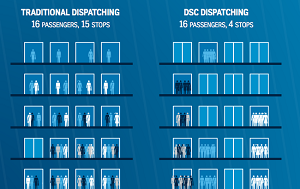 They also say that the traditional elevator systems for 16 passengers, would theoretically make 15 stops, however, with their technology there would be only 4 stops, due to double the number of cabs on one shaft. The company says with fewer stops than a traditional system, there is less energy consumption that occurs. Another energy saver is that if there is not a lot of foot traffic occurring during the day, one out of the two elevators can be parked during off-peak times. The company says with one shaft, the number of construction materials necessary on site will also be lowered. According to TechInsider, the United States will be seeing their first Twin elevators in a building at Georgia Tech in 2018. The number of buildings that currently utilize the Twin system sits at 200, worldwide.
They also say that the traditional elevator systems for 16 passengers, would theoretically make 15 stops, however, with their technology there would be only 4 stops, due to double the number of cabs on one shaft. The company says with fewer stops than a traditional system, there is less energy consumption that occurs. Another energy saver is that if there is not a lot of foot traffic occurring during the day, one out of the two elevators can be parked during off-peak times. The company says with one shaft, the number of construction materials necessary on site will also be lowered. According to TechInsider, the United States will be seeing their first Twin elevators in a building at Georgia Tech in 2018. The number of buildings that currently utilize the Twin system sits at 200, worldwide.
Safety is obviously a huge concern for people, who are afraid of a second elevator cab crashing down into the first one. However, ThyssenKrupp says they have it all handled with a four stage safety system that regulates the minimum distance the two cabs can be from each other.
To see how it all works, check out the promotional video below. You could be riding one of two elevators quite soon.
Stanford University's engineers are back in the news again for biomedical engineering that would involve using a urine test to determine whether or not a person has a disease or not. Yes, that does sound like the way it has been done for quite some time, however, engineers are trying to revolutionise the testing process and make it as simple as home testing. In the past, almost like the litmus paper test, a paper is dipped into the collected urine sample and the paper changes colour. However, the results of these sorts of tests have been inconclusive, and so the engineers went to work to perfect this problematic way of testing for diseases.
"You think it's easy -- you just dip the stick in urine and look for the color change, but there are things that can go wrong. Doctors don't end up trusting those results as accurate," said Audrey Bowden, an assistant professor of electrical engineering at Stanford.
The engineers have designed a small box that will still utilize a paper with samples on a dipstick but will make use of a smartphone app. The camera notices changes in color and can accurately measure which disease is prevalent on the dipstick.
Is it completely full proof? Is it the legitimate answer to home testing for diseases?
"If you have too little or too much urine on the dipstick, you'll get erroneous results," said Gennifer Smith, a P.h.D student in electrical engineering. This used to be another problem with the dipstick test in the past, however, to circumnavigate the problem, the engineers designed a "multi-layered system to load urine onto the dipstick." Therefore, the dipstick gets the right amount of urine and does not overdose the dipstick.
The engineers hope to release an official app for phones with the box in the future so that people could test themselves at home instead of having to pay costly doctor's fees to go in just for a solitary test. Smith said: "This device can remove the burden in developed countries and in facilities where they don't have the resources to do these tests."
They have published their findings in the journal Lab on a Chip. The report is titled: Robust dipstick urinalysis using a low-cost, micro-volume slipping manifold and mobile phone platform.
Source: Stanford News
Bendable phones are getting closer and closer to being a reality. There are hurdles, but nothing engineers cannot eventually work around to bring the smartphone market a phone that can bend without breaking and produce 3D images. Queen's University Human Media Lab have played around with this technology and are saying that they have developed the world's first holographic flexible smartphone.
They have nicknamed the phone the HoloFlex. The phone uses tiny lenses, planted onto a 1,920 x 1,080 HD OLED screen which then also shows images in 3D. The engineers explain that is lightfield lens array and OLED touchscreen technology that enabled them to craft a screen that would show 3D images without the need for glasses or head tracking and also bends.
"It has a light field display, preserving the angles of all the light rays in a 3D image through a layer of microlenses," say the engineers in the promotional video. This allegedly allows multiple people looking at one device to see stereoscopic depth images with motion parallax without any glasses. Right now, the images don't look all that impressive and the screen looks clunky to operate due to lagging issues but as the technology progresses it will obviously become just like our smartphones we use today.
Just imagine Skyping or Face-timing someone and their face pops out of your screen in a holographic representation of them.
This is not the first time these specific engineers from Queen's University have played with bendable, holographic materials. They also have a bendable smartphone prototype that is less 3D but is very bendable and can do some interesting stuff. ReFlex is a smartphone the engineers are releasing that is bendable to a point, and can mimic the act of flipping pages in a book with its bendable surface. The engineers, as they did in their holographic example, play Angry Birds to show how the technology would work.
"When this smartphone is bent down on the right, pages flip through the fingers from right to left, just like they would in a book. More extreme bends speed up the page flips. Users can feel the sensation of the page moving through their fingertips via a detailed vibration of the phone."
The phone utilizes a set of bend sensors and a haptic actuator that sends the vibrations to the phone that sends the haptic feedback into the advance so a user knows and understands how they are controlling the phone and what specific movements makes it respond.
"This allows for the most accurate physical simulation of interacting with virtual data possible on a smartphone today," said Roel Vertegaal, the director of the Human Media Lab at Queen's University.
Read the entire report: ReFlex: A Flexible Smartphone with Active Haptic Feedback for Bend Input by clicking
Molybdenum disulfide (MoS2) is the newest addition to semiconductors in the optoelectronics field. Optoelectronics is the field of engineering that has produced great, useful machinery like X-rays, infrared and more. Now, engineers from the University of Buffalo's School of Engineering and Applied Sciences have discovered a method wherein ultrathin semiconducting materials absorb light at a higher rate. In the abstract to their study, the engineers go a bit more in-depth into what they have been experimenting with. The study's name is MoS2 monolayers on nanocavities: enhancement in light-matter interaction
Two-dimensional (2D) atomic crystals and van der Waals heterostructures constitute an emerging platform for developing new functional ultra-thin electronic and optoelectronic materials for novel energy-efficient devices. However, in most thin-film optical applications, there is a long-existing trade-off between the effectiveness of light-matter interactions and the thickness of semiconductor materials, especially when the materials are scaled down to atom thick dimensions. Consequently, enhancement strategies can introduce significant advances to these atomically thick materials and devices.
Here we demonstrate enhanced absorption and photoluminescence generation from MOS2 monolayers coupled with a planar nanocavity. This nanocavity consists of an alumina nanolayer spacer sandwhiched between monolayer MoS2, increasing the exclusive absorption of monolayer MoS2 to nearly 70& at a wavelength of 450nm.
The nanocavity also modifies the spontaneous emission rate, providing an additional design freedom to control the interaction between light and 2D materials.
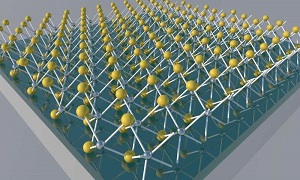
Qiaoqiang Gan, P.h.D, assistant professor of electrical engineering at the University of Buffalo's School of Engineering and Applied Sciences told PHYS: "The nanocavity we have developed has many potential applications. It could potentially be used to create more efficient and flexible solar panels and faster photodetectors for video cameras and other devices. It may even be used to produce hydrogen fuel through water splitting more efficiently."
Ultra-thin solar panels would be most helpful to the future of energy storage that is gaining popularity in the world today. More energy efficient electronic devices could also revolutionize the 'smart' device industry as well.
The Internet of Things industry will be connecting over 34 billion devices by 2020, and a lot of that will be industrial factories. We reported at the beginning of May, that manufacturing, households, transportation and almost everything engineering is going to be connected to the Internet of Things in 2020. We also reported that currently only 8 percent of the manufacturing world is utilizing IIoT (Industrial Internet of Things) but will grow by 18 percent over the next five years.
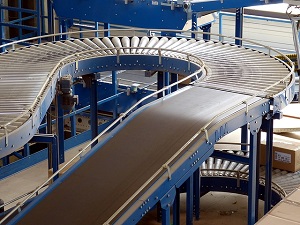 "No industry produces more data than the manufacturing sector, and all of that information can be applied to making smarter business decisions. Companies need to participate in capturing that value. There is $65 billion worth of obsolete industrial automation in use right now. It's only going to get more expensive to repair and replace it. Companies have to commit to modernizing," said Brian Fourtney, a Global Business Manager at Rockwell Automation, speaking to Plastics Today.
"No industry produces more data than the manufacturing sector, and all of that information can be applied to making smarter business decisions. Companies need to participate in capturing that value. There is $65 billion worth of obsolete industrial automation in use right now. It's only going to get more expensive to repair and replace it. Companies have to commit to modernizing," said Brian Fourtney, a Global Business Manager at Rockwell Automation, speaking to Plastics Today.
Fourtney is adamant to underline the fact that some factories are not modernizing as fast as they should be. The lack of modernizing a factory floor is like cutting off the nose to spite the face at the end of the day when 2020 could be approaching quite quickly. A country that has no delaying tactics when it comes to embracing technology that utilizes IIoT is, unsurprisingly, China.
"With the development of robotics, unlit and unmanned factories will be the next industrial trend," said Deputy Dean of the Overseas Education College at Shanghai Jiao Tong University, Gu Liafeng. He calls it 'smart manufacturing', where industry will be connected through IIoT and what is being called "Chinese-style Industry 4.0". Chinese companies are on the forefront of ensuring that factories utilize sensors and data-generating components along with A.I. machines that can perform tasks more efficiently and safely than humans can, whilst generating analytics.
However, replacing workforce is not an easy task when thinking about the societal damage a company can do by replacing all of its workforces with robots who can do their jobs.
"We always talk about migrating systems -- software and hardware -- but what we're really doing is migrating people. Just ask any engineer -- migrations rarely go smoothly -- and migrating people is no different. We have to create a pathway for folks in operations to control their own destiny and achieve success," says Fourtney.
According to South China Morning Post, Europe bought 50,000 industrial robots in 2015, whereas sales in the U.S., Canada and Mexico only reached 34,000 sales combined. Grey Orange, an Indian company who specializes in assisting factories with robotic inventions (see video below), has seen the benefit of working alongside the Chinese and have moved into the market to hopefully get a slice of the automation market that is booming there. A market that trumped the rest and purchased 66,000 industrial automation robots in 2015.
The butler systems are given commands by a human, and according to the video, teaching a human how to direct these robots to do the hard work is not difficult. The Industrial Internet of Things will be bringing the robot revolution, but perhaps it won't take as many jobs as we once thought.
Tony Seba is a lecturer at Stanford University who was given the opportunity to address the Thailand energy sector. He spoke about four key areas that would see rapid change and bring the most market disruption: energy storage, self-driving cars, electric vehicles and solar. He referenced a report that said that the U.S. and Canada would be running off 80 percent renewable power by 2030, saying the report lacked any truth.
Seba thinks that consumers would be fully utilizing electric vehicles by 2020 and by that time hopefully fossil fuels would become obsolete. He fully believes that by 2025, gasoline and diesel cars will no longer be sold but also concedes that the sales of EVs will not be enough to fully diffuse fossil fuels in our world today.
Disrupting the car industry is something we have already seen taking place, however, what about solar energy and moving away from utility grids all around the world?
"You have to ask yourself if solar keeps doubling every two years, how much more doublings before solar is 100 percent of the world's energy-- and not just electricity," said Seba. He says that subsidizing solar is the most disruptive things governments can do to businesses that are currently making money on fossil fuels. "All of this leads me to believe that solar will be by far the number one form of energy, and by 2020, it will basically wipe out every other form of energy."
Therefore, Seba thinks the 2030 projection by some scholars is wrong and rather the aim should be that by 2020 the world will be fully on solar and renewable energy.
For more from Seba, check out this video below on what will be disrupting the fossil fuels market and causing them to fully collapse by 2030:
Advanced Micro Devices Inc. (AMD) have found the right people to shake hands with to ensure that they continue to produce processors to the engineering industry. Due to this, they saw revenue jump up in the biggest increase in the last 35 years for the company and are reportedly expected to see a 15 percent increase in the second quarter of the year.
The deals made with AMD open a renewed battle for who can create the best x86 processors and system-on-chip technologies. The company linking arms with AMD is THATIC (Tianjin Haigunag Advanced Technology Investment Co. Ltd.). AMD will supply everything THATIC needs to build a server chip that could apply to several markets including the consumer and the enterprise markets, according to Bloomberg.
 Analysts of the computer market are saying this is what needed to happen for AMD to try and keep up with Intel. They are also saying the joint-venture will see intellectual property in the x86 sector finally get funding and introduce new products to the market. Data centers around the world would be running these AMD chipsets by 2017, however, if AMD really wanted to make a dent in the market, they'd start working on system-on-chip technology for self-driving cars.
Analysts of the computer market are saying this is what needed to happen for AMD to try and keep up with Intel. They are also saying the joint-venture will see intellectual property in the x86 sector finally get funding and introduce new products to the market. Data centers around the world would be running these AMD chipsets by 2017, however, if AMD really wanted to make a dent in the market, they'd start working on system-on-chip technology for self-driving cars.
A company named NXP has announced a chip that will act as the "central computing engine" for self-driving cars that will fuse the radar, Lidar and scanning equipment in a self-driving car and ensure those processes work flawlessly. They are calling their solution the Bluebox system. The company said that the chips had made their way to some top carmakers in the industry but have not confirmed which ones.
Kurt Sievers, the executive vice president of NXP's automotive business, said in a statement: "With this industry-first platform, NXP is leveraging its worldwide automotive silicon leadership to dramatically advance the state of autonomous vehicles. Our systems-level expertise, deep understanding of complex ADAS (Autonomous Driving System Architecture) engineering challenges, and broad portfolio of NXP products meeting automotive-grade (ISO 26262-level) functional safety requirements, all position NXP as the definitive silicon provider capable of single-handedly speeding the readiness and availability of self-driving cars tomorrow."
After 30 million ADAS processors sold by NXP, it has made them the largest provider of silicon chip producing in the world today.
Who is leading the charge in the 3D printing world? The answer may be revealed at the 3D Manufacturing Event hosted by RAPID, the authority on 3D printing, scanning and additive manufacturing on an industrial level.
The keynotes that are going to be delivered on the 16th to the 19th of May, 2016, include:
- Transition to production
- Next generation manufacturing: Leveraging the digital thread
- 4D printing in Medicine: Developing medical devices for the growing patient
- The future of additive manufacturing and 3D printing
The event is expected to see a new piece of software that will reportedly astound the industry. The name of the software is Materialise Magics 3D Print Suit.
The event should clear up some of the details of the industry that manufacturers would like to hear about before they take the plunge and invest money into 3D printers.
To see the software in action, check out the video below:
A company that is trying to capitalize on the 3D printing hobbyist movement is a company named Sculpteo. The company conducted a study to measure the rise of 3D printing hobbyists who are actively looking into casual 3D printing just for the fun of it. What they found was that the most hobbyists are from Europe, a staggering 55% of their responses. In at 40% was North America. The study had 300 respondents. Forty-six percent of the respondents said that they were first-time 3D printing hobbyists whilst the others had already begun delving into the world of 3D printing.
As 3D printing is growing, the concern over intellectual property and copyright have arisen in the engineers who are crafting these printers' minds. Michael Wineberg is from a 3D printing company called Shapeways and they run an industrial 3D printer that takes orders and requests - and then ships the finished product off to customers. He spoke to PBS' Idea Channel and said: "With 3D printing there are lots of objects that are protected by copyright because they are non-functional, creative works but there are also a lot of objects that are functional works that are categorically excluded from copyright protection because they're functional works."
Wineberg refers to engineers when they are printing something that serves a functional purpose. If it's a door hinge, a screw, a cog or something that has a functional purpose it is usually outside of the scope of copyright. But, if you're going to print an Action Man doll, there might be some copyright infringement that occurs.
Therefore, if you are to become one of the enthusiasts buying themselves a 3D printer for hobbyist uses, remember to be mindful about copyright infringement.
Who said engineering isn't fun?
Students at the Bringham Young University in Utah, have developed an artificially intelligent robot that not only serves as a partner to play games with when you're lonely but can also beat you at foosball. Nathan Warner, a BYU student in computer engineering, said: "So we're building a robotic vision-controlled foosball table. So, the objective is to defeat a human player." The students programmed how a normal human would play the game and then put that into the coding. There is a camera that is set up above the table and watches where the ball is and changes its algorithms based on where the ball is travelling. The students say the robot has started out-thinking them, which is testament to its artificial intelligence learning what it should and should not do when playing foosball.
Joseph Quist, who helped develop the table said: "Our system responds very quickly ; it's faster than humans."
Robots defeating humans at their own games is nothing new. Back in January, Google's artificial intelligence DeepMind showed that it could beat the reigning champion of Go. You can watch all the games on YouTube to see how the A.I. defeated Lee Sedol. The A.I. beat the European champion 5-0, however, once it played Lee Sedol it lost one game, but won the other four.
Then the Japanese built a robot that could play soccer against humans and also showed immense promise when it came to a demo-match. The robots were built by the Beijing Information Science and Technology University and took part in the annual RoboCup, an event where robots go up against humans in small games.
One of the engineers that worked on the soccer-playing robots spoke to The Mirror, saying: "Robots act differently on their own decisions. They move to positions for scoring or defending." The game ended 3-2 to the robots and was one of the first times soccer-playing robots showed such agility, whereas in the past the robots that were put on a field of play where mostly slow and clunky.
It all comes down to artificial intelligence and how that A.I. has been embedded into a robots inner-workings. However, there are a lot of engineers who discourage this work due to the overwhelming results that paint a picture of a robot-job-takeover future. Some opinion makers are scared that soon all sorts of jobs will be overrun and done more efficiently by robots. Some have already met that fate.
For instance, today a law firm named BakerHostetler has just taken on a new employee. An artificially intelligent employee. It is called ROSS and it does the legal work of a "Super Intelligent Attorney." The system utilizes IBM's Watson. Lawyers can now ask insanely complex law questions and then the artificial lawyer will give them an answer based on the ever-growing principles of law. The engineers at the University of Toronto, have said that this 'search-engine of law' of sorts is intended to be used alongside a human team of lawyers.
For more information on how ROSS works, check this video out:
ITU and Cisco have teamed up to release a sixty-one-page document detailing what needs to happen globally to facilitate the operation of the Internet of Things and how it will develop our world in the future. The report was titled: Harnessing the Internet of Things for Global Development.
Mr. Houlin Zhao, the ITU secretary-general wrote in his foreword to the report:
"The Internet of Things is not a single, unified network of connected devices, but rather a set of different technologies which can be put to work in coordination together at the service and to the ultimate benefit of people in both developed and developing economies. This set of Internet of Things technologies is realizing a vision of a miniaturized, embedded, automated environment of devices communicating constantly and automatically. However, connecting up devices or robots (whether they are bridges, fridges or widgets) is only a means to an end -- the really interesting part arises in terms of what can be done with the data obtained, and the learning outcomes for improving the future."
Cisco outlines three categories of society where IoT has directly changed the way the world does things:
| Level: | Individual | Community | Society |
| IoT |
Smart phones Weareables |
Connected Cars Health Devices Smart Homes |
Smart Cities Smart Grids |
| Examples |
GPS, Fitbits Visa Paywave Mastercard Paypass Employee passes |
Intelligent Transport Systems Event Data Recorders (EDRs) Blood pressure monitors Remote burglar/heating systems |
Smart metering Smart water meters Traffic monitoring |
| Data |
Mobile money Fitness data GPS location-based data |
Speed, distance, airbag, crash locations/alerts Heart rate, blood pressure, diet, remote heating data |
Electricity/water Consumption & billing Traffic flow data |
| Intended Audience |
Individual person Immediate friends/family Banks, employers |
GP, health authorities, health & car insurance, police, social networks |
Authorities/regulators Utility companies Other citizens |
The report is a pretty comprehensive read to get up to date with what Cisco is doing in the world of Internet of Things and how far IoT has progressed in the world of today.

Hewlett Packard Enterprise Co. has also decided to chase the IoT market with a newly announced platform named the HPE Universal IoT Platform software. The software was engineered to look at all of the devices connected to a network and analyze data that these applications produce. They are a bit late to the game in terms of announcing a software solution for the future IoT networks their products will have to share but better late than never. The company confirmed that the software solution for will be able to run on any company or even personal server. Nigel Upton, HP Enterprise's director and general manager for IoT spoke to Wall Street Journal, indicating that they were also in talks with a car company that will utilize their new software. He said: "They [the car company] said, 'We don't want a killer application but a killer platform that allows us to integrate everything."
Gartner Research has said that IoT will grow at 31.7 percent CAGR by 2020. Getting involved in the industry is a time-sensitive issue if companies want to have the monopoly over the Internet of Things by 2020. However, competition lines are being drawn in the sand. IBM engineers are accusing Cisco of trying to corner the IoT market, whilst other companies jump into the profitable boat as well. It will be a battle, however, the IoT industry could be a market that separates the men from the boys and only the fittest will survive.
It has been reiterated and reiterated by experts in the field this year, that engineers should be furthering themselves with non-engineering skills that they could use in their engineering job. The emphasis on entrepreneurship in engineering has pushed engineers to try and achieve more than just mastering their studies but also finding the business opportunity in the industries they fall into. MIT has been championing these sorts of engineering add-ons and now they have announced that they will be hosting a course named Entrepreneurial Negotiations: The MIT Way.
Bhaskar Pant, the executive director of MIT Professional Education, said: "Negotiations in the entrepreneurial arena are critical, but incredibly complex. We are fortunate to be able to offer a course on the subject from a world-renowned authority at MIT."
 The professor who lead the course, that costs a mere $475 for six weeks, Professor Lawrence Susskind, said: "Many engineers can dream up promising inventions; they can even produce a business plan and find interested investors. What they don't know how to do, though, is negotiate on their own behalf. By taking the course, engineers will gain skills and strategies they need to get buy-in, sell their ideas, and achieve success." She says that 'engineering logic' without any negotiation training can lead to serious negotiation mistakes. "The exercises we use cover new ventures in biomedicine, aerospace, and real estate. Some of MIT's own entrepreneurs who have launched successful businesses will also provide their insights on their most difficult negotiation challenges."
The professor who lead the course, that costs a mere $475 for six weeks, Professor Lawrence Susskind, said: "Many engineers can dream up promising inventions; they can even produce a business plan and find interested investors. What they don't know how to do, though, is negotiate on their own behalf. By taking the course, engineers will gain skills and strategies they need to get buy-in, sell their ideas, and achieve success." She says that 'engineering logic' without any negotiation training can lead to serious negotiation mistakes. "The exercises we use cover new ventures in biomedicine, aerospace, and real estate. Some of MIT's own entrepreneurs who have launched successful businesses will also provide their insights on their most difficult negotiation challenges."
The Dean of Engineering at the Engineering Institute of Technology, Steve Mackay, agrees that engineers need negotiation skills. In his YouTube series, the Engineering News Network, in the episode 'Negotiate for a win-win outcome', he said: "The trick with negotiation is 'don't destroy the other party'. You will be horrified how many people go into negotiation with the approach of destroying the other party, screaming into the ground and making a lot of money." He outlines a list of things to look out for whilst in the process of negotiating a deal.
Mackay's proven techniques:
- Avoid the you-lose-I-win strategy
- Try and build trust in a negotiation
- Try and look for hidden issues
- Research the other point of few with exquisite detail
- People are so anxious to negotiate, they don't have time to communicate their positions clearly
- Reframe the problem in a different way
- Once you've done your proposal, the trick is to shut up and wait for the response
- Always look for solutions, try and use natural thinking
"Finally, when you finish your negotiation, always, always, write it down and make sure both parties agree with what you've written down. It's horrifying after a successful negotiation session, you come back three weeks later and you start negotiation again because you didn't actually agree or you forgot what the deal was.," Mackay concluded.
Technavio Research is the leader in technology research that observes a global market and can generate statistics based on their findings. They have recently looked into the impact that global industrial automation is making and watching its trends to predict what it is going to do in the future. The report they have released is called: Global Industrial Automation Market in Life Sciences Industry 2016-2020. Included under the umbrella of life sciences would be things like robots and automated processes in the medical field, pharmaceuticals, any factories that process raw materials, biomanufacturing facilities, etc.
The researchers looked at the different systems in the global industrial automation market in life sciences that generate the income for the bio-engineering branches of several companies:
- Programmable logic controllers (PLCs): which account for 753.86 million USD of the market
- Manufacturing execution systems (MES): which account for 529.2 million USD of the yearly market
- Supervisory control and data acquisition (SCADA)
- Distributed control systems (DCS): which accounts for 1.4 billion USD of the market
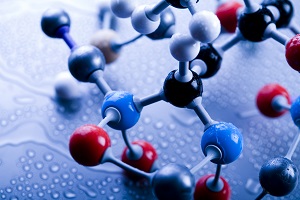
Technavio researcher, Bharath Kanniappan warned the industry, however, that they would soon need to adopt cloud-based solutions. He said: "Cloud-based software-as-a-service is likely to become the next logical step in the evolution of automation technology in the life sciences industry. Life science companies are becoming more comfortable with the concept of service-based technology architecture. Thanks to the shift towards a more cloud-based environment, they are expected to incur immense benefits such as reduced costs, greater flexibility, and enhanced functionalities."
The compound annual growth rate, according to the researchers, will reach 5% by 2020. Thanks, in part, to the adoption of cloud-based solutions in manufacturing execution systems, distributed control systems and SCADA systems. They also estimate that the industry will be worth US$ 5 billion by 2020.
The companies that have the monopoly over the global industrial automation industry in life sciences are: ABB, Emerson Electric, Rockwell Automation, and Siemens.
Source: Business Wire
China is among the first countries to begin their implementation of security robots. The robots will be patrolling the Congqing district in China, and was built by the National Defence University. The robot has been named 'AnBot' and weighs in at a staggering 78 kilograms. It can travel at 11 miles per hour and stands at 1.5 meters tall. The university says that the robot also has anti-terrorism and anti-riot measures. It is also allegedly capable of eight hours of "continuous work".
Xiao Xiangjiang from China's National University of Defense Technology said: "AnBot has a high degree of autonomy, it could patrol, avoid obstacles and identify and charge on its own."
Edward Snowden gave his sarcastic two cents about the robot, saying: "Surely this will end well."
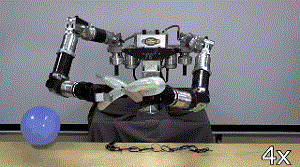 Elsewhere in the robotics world, engineers have been working on dexterity in robot arms and limbs. RE2's Robotics High Dexterous Manipulation System, according to Daily Mail, can tie knots, open zips, make balloon animals and more. RE2 is a company in the United States and maintain that their dexterous robots could one day be the helper around the house everyone has been searching for. And the replacement of clowns at kids parties, evidently. Kidding aside, the company is also certain that it will be able to form part of the ever-growing list of robots that are assisting hospitals in their surgeries today and could attempt to diffuse potential bomb threats.
Elsewhere in the robotics world, engineers have been working on dexterity in robot arms and limbs. RE2's Robotics High Dexterous Manipulation System, according to Daily Mail, can tie knots, open zips, make balloon animals and more. RE2 is a company in the United States and maintain that their dexterous robots could one day be the helper around the house everyone has been searching for. And the replacement of clowns at kids parties, evidently. Kidding aside, the company is also certain that it will be able to form part of the ever-growing list of robots that are assisting hospitals in their surgeries today and could attempt to diffuse potential bomb threats.
Bloomberg, however, maintains the most innovative and future-ready work in robotics is happening in MIT. They sat down with MIT computer science and A.I. lab professors John Leonard and Daniella Rus.
Leonard talking about the work they do in robotics said: "I think there's something special in the air at MIT, it's a very interdisciplinary culture. I'm in mechanical engineering, Daniella is in computer science, we work across boundaries between fields to work together to create systems that combine the best multiple disciplines and a robot is one of the best embodiments of that."
The MIT professors are hoping that in the next five years they would have made robots more intelligent, building robots faster and making robots and humans work alongside each other even more so than they are doing already. "In five years I think having a car that is much more highly automated that will impact your life," Leonard said. The professors also showed off a fully 3D printed robot that was ready to operate by just adding a battery and a motor.
NASA will also be utilizing MIT's robotics testing facilities after they gifted the university two of their Valkyrie humanoid robots to play around with. NASA's intention is to measure the feasibility of taking the robots to Mars and then letting the robots do tasks that would've required manpower in the past. Russ Tedrake, who is leading the project said: "Our work is about vetting the robot and seeing what is capable of. If we can integrate the autonomy work with our planning and control algorithms, it could result in an unprecedented level of autonomous capabilities for a humanoid robot." [Via: MIT Computer Science and Artificial Intelligence Laboratory]
Here the teams at MIT assemble the humanoid:
It's a question that some science fiction novelists have most likely thought about. How interactive can a single piece of paper be in the future? Could we develop paper that we can digitally interact with and use? Almost like in Harry Potter when you see a newspaper that has moving images on it, or in the cancelled Syfy show Caprica, where paper can be used to send a text message over WiFi. That might actually be a possibility in the near future.
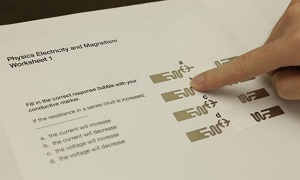
Engineers at the University of Washington with the contribution of Disney Research and Carnegie Mellon University has developed paper that will respond to gestures and could be connected to the internet. They are calling it Paper ID and have published the work under the title: A Technique for Drawing Functional Battery-Free Wireless Interfaces on Paper.
Lead author of the study, Hanchuan Li, who is a doctoral student in computer science and engineering at UW, said: "Paper is our inspiration for this technology. A piece of paper is still by far one of the most ubiquitous mediums. If RFID tags can make interfaces as simple, flexible and cheap as paper, it makes good sense to deploy those tags anywhere."
The researchers use inexpensive ultra-thin battery-free radio frequency identification (RFID) tags to create "paper input devices" as they have put it. The researchers say their physical constraints have been issues such as circuit size, wiring and power. However, the researchers have worked past these problems using the RFID tags that can pick up gestures and movement around the antennas that have been printed. Li says, "These little tags, by applying our signal processing and machine learning algorithms, can be turned into a multi-gesture sensor. Our research is pushing the boundaries of using commodity hardware to do something it wasn't able to do before."
As a result, the technology already shows amazing promise, and with Disney Research as a contributor, we're sure there is no lack of money with pushing smart-paper forward. It could have many different uses in many different industries.
Source: University of Washington
Civil engineers in the United States have observed the current problem Miami has with floods. A new study by Miami-Dade County projected that due to the rising of sea levels, there will be a flood every day by 2045. Currently, Miami experiences 45 floods a year according to Fusion.net, this number would rise to 80. The Union of Concerned Scientists (USC) perused data that the Army Corps of Engineers compiled and as a result are issuing the latest warning for something to be done.
The USC have since released a report in which they say:
By 2045, sea level in Miami-Dade County is expected to rise about 15 inches above current levels, according to a projection by the US Army Corps of Engineers. With this increase, in just 30 years' time, flood-prone locations in Miami-Dade County's coastal communities would face roughly 380 high-tide flood events per year, and the extent of tidal floods would expand to affect new low-lying locations...
A one-foot increase in sea level is estimated to threated up to $6.4 billion in taxable real estate in the country overall

Now, what civil engineers are doing in the Miami-Dade County area could redefine what other coastal towns or villages do in the event that sea levels rise to the extent that they are in Miami.
The country has currently pumped $20 billion into storm protection efforts after Hurricane Sandy in 2012. The Army Corp Engineers were also tasked with surveying the areas in trouble of immediate flooding. They concluded that 6 million people are in vulnerable areas. The estimated damage that could be caused by 2045 is $616 trillion [Miami Herald]. It sounds like a civil engineering headache.
The University of Miami has also conducted research into the area and published their findings in a study titled: Increasing flooding hazard in coastal communities due to rising sea level: Case study of Miami Beach, Florida .
In the highlights section of the study, the researchers say:
Increasing sea level in the Miami area correlates with weakening of the entire Gulf Stream system.
Engineering solutions to SLR should rely on regional sea level rise rate projections and not only on the commonly used global SLR projections
The researchers are warning that Miami is an isolated case on its own and cannot be aligned with what is happening globally. What does, however, make the situation worse is the global climate change that adds inches to the sea level. The problem with Florida, according to the engineers researching at the University of Miami, is that they are most vulnerable due to the state's " low elevation, large population concentrations and economic importance."
Thus, engineers are installing new storm sewers and pumps, according to NPR. Miami Beach will also reportedly see a $400 million project that will include building 80 pump stations throughout the city. The more dire the situation becomes, the more civil engineers the state will look to employ to reverse the damage of oncoming tidal rises.
Here is a video with physical proof of what civil engineers have been doing since the end of 2014 in Miami. The government claims they will try and keep the Miami area dry for up to 500 years. Although, renewed case studies show that that is a tall order.
As reported on yesterday, Hyperloop One, the company behind taking Elon Musk's desire to redesign the world of public train transport, was to conduct its first open air test. You can see the results of the test below...and spoiler alert...it's quick and disappointing to watch. However, to the engineers working on the project, it is what they need to gather the data and prepare for the next test.
The sled - seen in the video above - reached 2.5 Gs and got to 167 MPH before ending its run in a sandpit. The next step in the testing phase is putting together tubes that are currently at the test facility in Nevada and building a 1.5 kilometer (0.93 mile) test tube. The engineers are hoping they will be able to test out the levitation system and reach speeds of 400 MPH and more.
The video below is from Hyperloop One itself and drums up a bit more excitement for the future of the project. Engineers around the world are still criticizing the project and questioning its feasibility, however, time will tell whether or not this is a pipe dream or not.
Caterpillar is in the news again, soon after they announced their energy storage offerings to the world. Now, in their Global Research & Development Center in the U.S., they have officially opened a 3D Printing & Innovation Accelerator center. Caterpillar produces most of the construction equipment you would see on sites today and will now be 3D printing some of its parts. The new center will also allow engineers to test out creative ideas
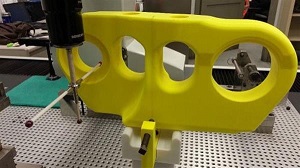
Jim LaHood, who works for Caterpillar's additive manufacturing team said: "The possibilities are endless in the factories. Things that are previously done out of metal that doesn't need to be -- like little tools and gauges -- can be made from plastic now."
Moreover, Caterpillar says they are not strangers to 3D printing. They say that they have printed 50,000 models over the last 25 years when 3D printing looked a little different than it does today. The company says it is glad there is now a cost-effective way to print that uses less energy and money.
Caterpillar is not allowing themselves to be left behind in the modernisation of civil engineering and how it is changing. They call this changing nature of the industry the 'Age of Smart Iron' and say they are prepared to take on the task. Thus, their energy storage solutions and 3D printing facilities show that they are ready for the immediate future.
But wait...there's more. Caterpillar Inc is not done yet. Chief Executive of Caterpillar, Doug Oberhelman met with ministers in Cuba in hopes that they can start moving some of their tools into the country and improve trade ties once the U.S. trade embargo is fully lifted.
He spoke to reporters, saying: "We have talked about a number of projects. I think the most interested one in the near term would be the Mariel harbor...making an efficient modern harbor that competes with others around the world." Caterpillar will be working with a Puerto Rican company in Cuba, named Rimco, who will act as their dealer over there, Reuters confirmed. "The idea is for our dealer to set up a facility here in Cuba. We would supply most of our products from Brazil."
Never has electrical engineering and audio engineering come together in quite an innovative way. Sony has announced a new iteration of their LED light bulb speakers. Yes, you read that right...lightbulb speakers. Sony Japan quietly launched the bulbs with Bluetooth speakers embedded into them last year in July.

The only two reviews from customers who bought it from Amazon.com, left unflattering responses as to how the light-speaker fared in quality. The one review by an anonymous Amazon user read: "Speaker is loud, but lack any trace of mod and bass. Decent light output. A Sengled light/speaker bulb is miles better. The remote control is a cool and nice feature." Another one by a user named Alowishus wrote: "Not a good product, sound is terrible." Then again, the product was only supposed to be sold in Japan.
The speaker clearly lacked in quality engineering and did not live up to any sort of hype Sony Japan had made to ensure that it was a good product. Bear in mind, the speaker back in July of 2015 cost $287.30, a hefty price tag for a product that wasn't widely bought and got negative reviews.
However, giving Sony the benefit of the doubt, a new and improved version seems to be making its way to the mass market.
The preview for the new and improved speaker makes it look like a product we would all want to buy. So why then did they initially launch something that lacked in quality? This is just one example of the thousand of products that are engineered that sometimes lack in the area of quality design. Anything from new lithium-ion battery units to the latest bridge that has been built can have poor engineering design quality. This is something that should be avoided at all costs. Although, companies that release consumer products sometimes rush the product to market and get the negative reviews that they do.
"Quality is obviously one of the driving forces for anything we do in engineering, it's a critical area," says Steve Mackay, the Dean of Engineering at the Engineering Institute of Technology. In the 35th episode of the Engineering News Network, the Dean's YouTube series, he speaks of a man that the Japanese utilized in the history of engineering called W. Edwards Deming who assisted in improving the quality of products that they manufactured. Mackay paraphrases Edwards Deming, saying: "If you try and focus on costs, you will find your costs tend to go up and your quality tends to go down. If you focus on improving the quality of the process you will tend to drive the quality up and eventually the cost will go come down."
Mackay gives engineers currently working on producing high-quality products some useful tips in ensuring premium quality throughout:
- Try and understand the process and the system really well. You will, therefore, avoid imperfections in a product.
- Where the variations in quality are coming from. What causes imperfections?
- Understand human psychology: What is the psychology of the guys working on the product that produce the final high high-quality?
Can Elon Musk proves the critics wrong once again? Could he and a team of engineers successfully show the world that a transport system that could travel 760 miles per hour is viable? Hyperloop Technologies Inc. has now become Hyperloop One in a rebranding announcement, rebranding so they would not be mistaken for another company with 'Hyperloop' in the name. Several other announcements about Elon Musk's dream transportation system were made to the media yesterday. Hyperloop One says they have received $80 million in venture capital financing and have built a network of engineering partnerships that will assist in hopefully making the Hyperloop a reality.
The group also announced that they would be conducting the first tests for the feasibility of a Hyperloop in the Nevada desert. The Nevada Desert is becoming synonymous with testing out products from Elon Musk-run companies.
Cheif Executive of Hyperloop One, Rob Lloyd, said: "The hyperloop is real. It's happening now." The propulsion test will be an open air test where the engineers are certain they will be able to reach 400 MPH. Later tests will be done in a vacuum-sealed chamber and will test the capabilities of a hypothetical Hyperloop and will try and reach 700 MPH. They would be using a 1-kilometer track and will test several of the engineered technologies that could send the Hyperloop into the future and into our cities.
The first level of criticism came from the experts who said that Musk's $6 billion estimate for how much the Hyperloop will cost was labeled unrealistic. Experts claim the Hyperloop would cost much more.
Lloyd told the Wall Street Journal: "We will reduce the cost of the hyperloop until it is two-thirds the cost of a high-speed rail system at three times the speed."
The rebranding announcement also comes with a new competition named the Hyperloop One Global Challenge. This will see the continuation of previous competitions of this sort which allow engineers to design mock-ups of what the Hyperloop might look like.
Visit the Hyperloop One website to see how far the engineers get in redesigning the future of public transportation.
Are you keen on marine engineering by any chance? Submarine drones are the new buzzword when talking about the South China Sea this year. China has been slowly reclaiming islands in the South China Sea, so, to keep an eye and allegedly "retain its edge" the United States is sending submarine drones to patrol the areas around these islands.
Ashton Carter, the US defense secretary, said that the drones are able to navigate in shallow waters, something that submarines cannot do. He also said: "Countries across the Asia-Pacific are voicing concern with China's land reclamation, which stands out in size and scope, as well as its militarization in the South China Sea."
The U.S. want to, as Carter put it, ensure their navy efforts are the "most lethal and most advanced undersea and anti-submarine force in the world."
The Financial Times reported that the U.S. allegedly also want to build a submarine that would have smaller drones within it that could be deployed.
Then the recent announcement of the automated boat the United States Navy had built was announced.
Meanwhile, engineering students from all over the world are hard at work every year to try and improve ROV technology and win big at the Marine Advanced Technology Education (MATE) ROV Competition hosted by NASA. Norwegian engineering students took to social platform, Reddit, to show off their latest ROV iteration that navigates in 6 degrees of freedom with an autopilot feature. This sort of fluidity in ROVs could prove helpful to future underwater vehicles that could utilize the technology produced at NASA's events to work alongside the Navy in future endeavors where marine engineering is required.
Last month, social networking giant, Facebook, announced a new terrestrial connectivity system named Terragraph and Project ARIES. The company believes that no matter where people are in the world, they deserve a premium internet experience, and this new project will assist communities that experience slow internet speeds and perhaps even some places that are devoid of the internet altogether.
Facebook also didn't mince their words when throwing the laying of fiber, and technologies like LTE infrastructure under the bus. The company said in a statement: "...the high costs associated with laying the fiber makes the goal of ubiquitous gigabit citywide coverage unachievable and unaffordable for almost all countries."
Therefore, Facebook put their Connectivity Lab to work. The result was Terragraph, a 60 GHZ multi-node, wireless system for supplying the internet to urban areas.
Although 60GHZ has traditionally been avoided due to its high absorption of oxygen and water, countries such as the United States, United Kingdom, Germany, China, South Korea, Japan and others saw the benefit of making this part of the spectrum.
- Facebook Terragraph statement
To see how the technology works, look at the video of the physical components that Facebook would be using to connect urban areas to the internet below:
A month later, the software engineers working with the hardware that will be capable of giving full urban areas internet coverage, have released software to modulate a distributed network application platform for the Terragraph project. The software's name is Open/R, and you can read the intricate details of how the software engineers developed the software: HERE.
Blog - Steve Mackay
EIT's Technical Director, Steve Mackay, enjoys keeping his blog up-to-date with useful tips and current industry matters for his fellow colleagues. He has a loyal and expanding following base reaching over 300,000 people around the world.
Student Stories
In this section you have the opportunity to read and listen to EIT students talking about the reality of the programs. Discussions are wide-ranging and include information about the study commitment required, the value of the qualification in their careers, the relevance of the subject matter, future pathways, and more. They provide valuable feedback for you to take into account before you decide to join one of our programs.
Career Information
Latest career information including industry research, podcasts, blogs, life hacks and general information about how you can make the most out of your career.
Education
Here you will find out more about the latest trends and developments within education worldwide, along with some helpful articles regarding study tips and keeping on track with your studies.
Developments
The latest innovation and inventions from the world of engineering can be found here. Learn about advances in technology and how they can make a real difference within your industry.
Announcements
Keep up to date with the latest announcements from the Engineering Institute of Technology. In this section you can read more about new courses, new recognition from professional bodies, our Excellence in Teaching Award, upcoming free webinars and much more.
Monthly Update
We understand that you may not have time to read all the articles that we post, so our monthly update gives you access to some fascinating articles which cover the best of the months news in a compact format.
